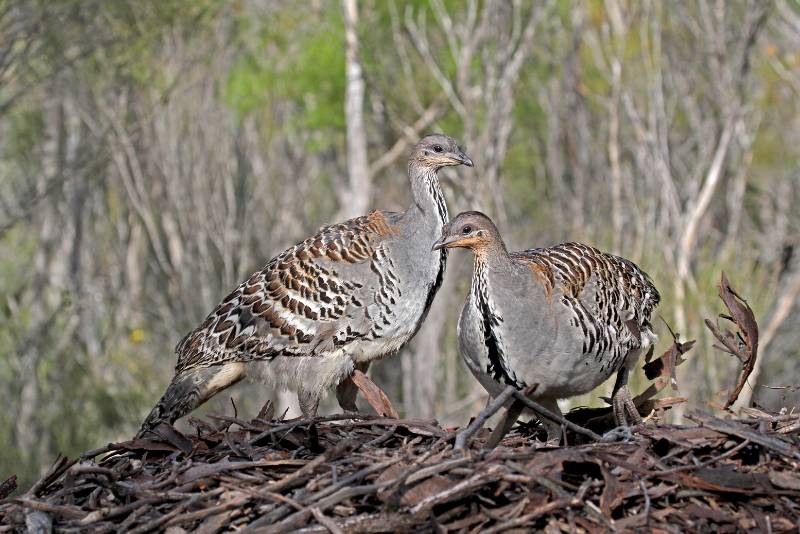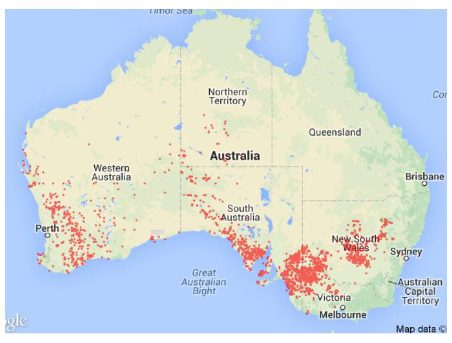
The Thermometer Bird: An Introduction
Have you ever heard of a bird that can regulate its own nest temperature? Meet the Malleefowl, Leipoa ocellata, a fascinating species found exclusively in Australia’s harsh outback. These birds have adapted to survive in the most arid conditions and have developed a unique nesting behavior that is closely tied to temperature. That’s why they are also known as the “thermometer bird.” In this blog, we’ll dive into the fascinating science behind the Malleefowl’s nesting behavior and learn how it has adapted to survive in one of the harshest environments on the planet. Get ready to uncover the secrets of this incredible bird species!
Physical Characteristics
Malleefowl are medium-sized birds that can grow up to 65 centimeters long and weigh up to 2.5 kilograms. They have a distinctive brown and black feather pattern that helps them blend in with their surroundings. Their legs are strong and muscular, allowing them to scratch the ground and create their unique nesting mounds.
Unique Nesting Behavior
Malleefowl are known for their unique nesting behavior that is closely tied to temperature. They build large mounds of soil and vegetation that can be up to 5 meters in diameter and 1.5 meters high. These mounds are carefully constructed by the male bird, who uses his strong legs to scratch the ground and create a perfect environment for the eggs to incubate.
The male bird carefully regulates the temperature of the mound, using his beak to test the temperature of the soil and adjust the mound as necessary. The temperature of the mound must be kept at a constant 33-35 degrees Celsius for the eggs to hatch. This unique behavior allows the Malleefowl to breed successfully in the harsh conditions of the Australian outback.
Conservation Status
Malleefowl are currently listed as “vulnerable” by the International Union for Conservation of Nature (IUCN) due to habitat loss and fragmentation. The destruction of their natural habitat and the introduction of feral animals such as cats and foxes have had a significant impact on their population.

Efforts are being made to conserve the Malleefowl population, including habitat restoration and predator control programs. The Malleefowl is a unique and important species that plays an important role in the ecosystem of the Australian outback.
Have you unlocked the secrets of the thermometer bird?
The Thermometer Bird is a unique and fascinating bird species that has adapted to survive in the harsh and arid conditions of the Australian outback. Its unique nesting behavior is closely tied to temperature, and it has become known as the “thermometer bird” due to its ability to regulate the temperature of its nesting mound.
However, the Malleefowl is currently facing threats from habitat loss and fragmentation, as well as the introduction of feral predators. It is important that we take steps to conserve this unique and important species to ensure that it continues to thrive in the Australian outback for generations to come.
Frequently Asked Questions
What is the Thermometer Bird?
The Thermometer Bird, also known as the Mallee Fowl, is a ground-dwelling bird species that is native to Australia. It is known for its unique ability to maintain the temperature of a large mound where it lays its eggs.
How does the Mallefowl lay eggs?
The female Mallee Fowl lays its eggs in a large mound made of soil and organic material, such as leaves and twigs. The male bird then uses its body heat to maintain the temperature of the mound, which is crucial for the eggs to hatch.
How does the male bird maintain the temperature of the mound?
The male Mallee Fowl uses its body heat to maintain the temperature of the mound. It lays on the mound for up to 15 hours a day during the breeding seasons, which usually occur between August and December.
What is the temperature of the mound where the Thermometer Bird lays its eggs?
The temperature of the mound where the Thermometer Bird lays its eggs is around 33 to 35 degrees Celsius. This temperature is crucial for the eggs to develop properly.
How long does it take for the female Mallee Fowl to lay its eggs?
The female Mallee Fowl takes around 10 to 12 weeks to lay its eggs. It lays one egg at a time, and it can lay up to 20 eggs in a breeding season.
Can the male Mallee Fowl lay eggs?
No, the male Mallee Fowl does not lay eggs. Its primary role is to maintain the temperature of the mound where the female lays its eggs.
Where does the Thermometer Bird live?
The Thermometer Bird, or the Mallee Fowl, lives in the arid and semi-arid regions of Australia, such as the mallee scrublands, heathlands, and woodlands.
Gangtokian Web Team


















































